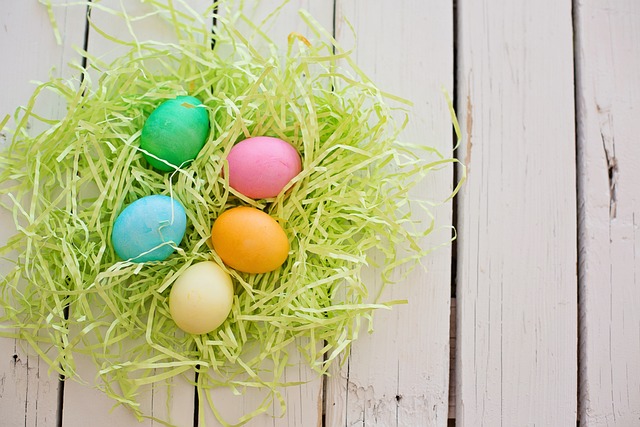Fill in the gaps with the verbs in brackets in the Present Simple, Past Simple or Present Perfect tense (active or passive voice).
Eggs occupy a special status during Easter observances. They’re symbols of rebirth and renewal—life 1. ……… (burst) forth from this otherwise plain, inanimate object that 2. …….. (give) no hint as to what it contains. In this regard it is a handy symbol for the resurrection of Jesus Christ, but it is is a symbol that 3. …….. (hold) this meaning long before Christianity 4. ……….. (adopt) it. (…)
The Phoenix 5. ……… (adopt) as a Christian symbol in the first century AD. It appears on funeral stones in early Christian art, churches, religious paintings, and stonework. The egg from which it rose has become our Easter egg. As with many symbols, the Easter egg 6. ………. (continue) to shift. When the Lenten fast was adopted in the third and fourth centuries, observant Christians 7. ……… (abstain) from dairy products, including milk, cheese, butter, and eggs. In England, on the Saturday before Lent, it was common practice for children to go from door to door to beg for eggs—a last treat before the fast 8. ……… (begin).
Even the act of coloring eggs 9. ……….. (tie) to the idea of rebirth and resurrection. While egg decorating kits offer a vibrant means of decorating eggs today, the link between life and eggs 10. ……. traditionally …….. (make) by using a red coloring. Among Christians, red symbolizes the blood of Jesus. Among Macedonians, it has been a tradition to bring a red egg to Church and eat it when the priest proclaims “Christ is risen” at the Easter vigil and the Lenten fast 11. …… officially ……. (break).
(…) The lighting of the Easter candle (…) represent(s) means of driving away darkness. Ishtar (the Assyrian and Babylonian goddess of fertility and sex) may well have some connection to the rites of Spring, and admittedly Easter itself is an observance of Spring, but in an age when so much wrong 12. ……….. (do) in the name of religion, and religion is a focal point for criticism and debate, it’s worth remembering that the overlap of time and history 13. ………. (give) us richer traditions than any of us can truly be aware of (…).
In order to read the whole article/check your answers, go to: https://www.scientificamerican.com/blog/anthropology-in-practice/beyond-ishtar-the-tradition-of-eggs-at-easter/
Key: 1. bursts; 2. gives; 3. has held; 4. adopted; 5. was adopted; 6. has continued; 7. abstained; 8. began; 9. is tied; 10. was made; 11. is broken; 12. has been done; 13. has given
Glossary
- semblance – a situation in which something seems to exist although this may not, in fact, be the case
- asunder – into forcefully separated pieces
- yonder – (old use) in the place or direction shown; over there
- rite – a traditional ceremony that is carried out by a particular group or within a particular society
- focal – central and important
Practice makes perfect
Read the article and decide if the statements below are true, false or not given.
https://www.inc.com/jessica-stillman/5-simple-steps-to-do-a-spring-cleaning-on-your-mind.html
1. The author suggests that spring cleaning should only be done by professionals.
2. Using bleach for cleaning will always lead to mental reset.
3. If you agree, you should sort through your thoughts like you would with clutter in your closet.
4. Using a bullet journal will make your mind even more cluttered.
5. You don’t have to stick to a specific journal format for mental decluttering.
6. Carroll suggests writing down only what you want to do.
7. Think about the reasons behind your actions.
8. The author recommends revising your inventory once a week.
Key: 1. NG; 2. F; 3. T; 4. F; 5. T; 6. F; 7. True; 8. F
Match synonyms:
|
1. de – clutter |
a) litter |
|
2. urge |
b) hold |
|
3. scrubbing |
c) desire |
|
4. clutter |
d) throw away |
|
5. tumble |
e) reduce to essentials |
|
6. discard |
f) fall |
|
7. grasp |
g) cleaning |
Key: 1e; 2c; 3g; 4a; 5f); 6d; 7b
Explore more to create your own teaching-learning experience!
The hidden beauty of pollination
Watch:
(4519)





